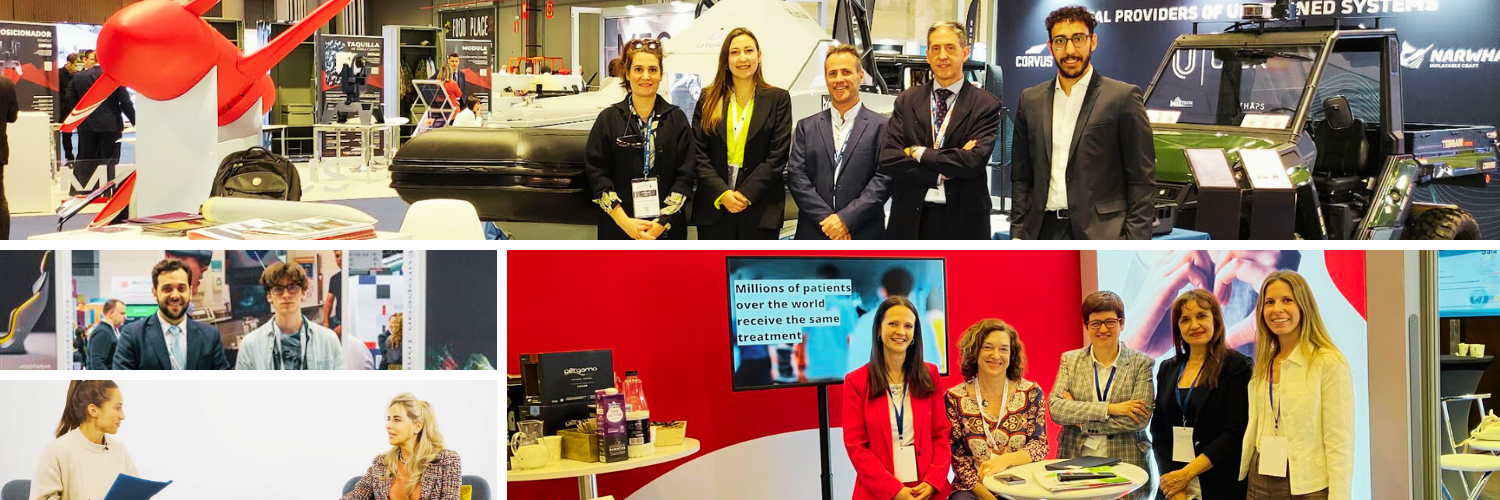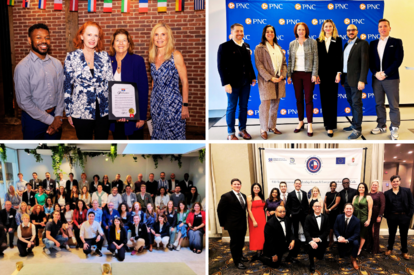
In a world of saturated markets and shrinking attention spans, innovative SMEs must go beyond great products: they need smart, strategic communication to succeed globally. Discover five powerful tips to help businesses elevate their promotional game, from mastering the art of timing to embracing creativity and emotional connection. If you're looking to take your company’s message to new international heights, these practical insights will guide you towards achieving your goals.
In today’s global business landscape, small and medium-sized enterprises (SMEs) often face a critical challenge: a gap in communication and marketing expertise. This shortfall can hinder even the most groundbreaking innovations from reaching their full potential.
To truly thrive, especially in highly competitive and tech-driven markets, SMEs must place strategic communication at the heart of their operations. Whether it’s increasing visibility, attracting the right customers, or building long-term growth, effective marketing is no longer optional: it is a vital engine of business success. That is why innovation-focused SMEs must embrace powerful communication strategies, particularly in key areas like IT and marketing, to not only overcome skill shortages, but also to outshine their competitors and make a lasting impression.
Here you have five communication tips to help you bring your promotional game to the next level.
1. Be quick!
In today’s fast-moving society, where traditional timeframes have changed, it is crucial for science and technology-based companies to seize opportunities for swift communication. If the right moment to share a message is lost, it becomes nearly impossible to get the same opportunity back. Moreover, in an information-saturated world where "infoxication" prevails, businesses must successfully capture their target audience’s attention, ensuring that those who receive their messages turn into potential customers or “leads” for their products or services.
Being the first to communicate often provides a competitive edge. The marketing and communication strategies in today’s digital landscape demand agility and speed. Rapidly and effectively delivering messages across different formats enables businesses to strengthen their market positioning, stay ahead of competitors, maximise impact, connect with potential customers, build a strong brand reputation, and establish a coherent narrative that conveys values to specific groups or communities.
At the Parque Científico de Madrid, one of the Spanish Enterprise Europe Network branches, we have seen this in action. We have closely collaborated with companies UTEK (specialised in remote control systems) and Nanostine (specialised in Ultra High Vacuum technique for the fabrication of nanoparticles in gas-phase) in various communication initiatives. When invited to participate in the innovation-focused podcast Inventando la Rueda (Inventing the wheel), by the InEGI research group from the Universidad Autónoma de Madrid, both Utek and Nanostine responded swiftly and took full advantage of the opportunity. Their timely participation allowed them to showcase their innovations through engaging interviews, reaching new audiences and reinforcing their brand presence.
This kind of agile communication, delivered consistently over time, creates lasting impact. Think of it as drip irrigation: steady, targeted messages that build recognition without overwhelming your audience.
2. Simplify your message
Innovative companies must tailor their communication to different channels and formats. Beyond the message itself, the key question is: who are you talking to? While the message may remain the same, the choice of channels and audience segmentation are crucial when planning content strategies to promote products or services.
Each audience has its preferred channel, reading habits, and tone. One major advantage of digital marketing is its ability to facilitate real-time planning, immediate adjustments, and, most importantly, precise performance measurement. These capabilities allow businesses to refine their strategies for continuous improvement, something that was unimaginable just a few years ago.
The rapid pace of today’s world demands concise communication. Choosing words and images with strong semantic impact is essential. If you want your message to reach and persuade your audience, be brief and direct. Explain the benefits, the problem your innovation solves, and how it improves people’s lives.
Failure to adapt language to the specific channel — whether offline or online — means missing opportunities to successfully deliver messages to the market. Without a clear communication strategy aligned with specific objectives, companies risk an inconsistent approach. For example, an overly technical or lengthy LinkedIn post targeting a non-technical audience accustomed to shorter content may lead to misinterpretation of the brand and potential loss of followers.
Golderos is a great example of how to communicate a clear and concise message to a broad audience. Their success story video presents Golderos' identity and achievements in a clear, easy-to-understand way. There is no jargon or overly technical language, just direct information about who they are (a second-generation family business), what they’ve accomplished (innovating the manufacturing of industrial equipment for beverage refrigeration), how they approach customers with personalised support, and how they have grown across the Asian market with the support of AECIM’s network.
3. Explain what’s in it for people
As marketing expert Kotler notes in Marketing 5.0, technology must ultimately serve people. For innovative companies, communicating the real-life benefits of their products is essential. Customers want to know: how will this improve my life? This is where value-based messaging comes in. What defines a company’s true value, though? Beyond traditional profit-driven models, today’s companies must act as change agents, solving real problems for individuals, communities, and society as a whole. Of course, a business must generate revenue to remain sustainable, but it must also create an emotional connection between its product and potential customers. The emotional impact of a brand’s solutions is essential for building strong relationships with its audience.
Spika Tech, a deep tech company supported by the Fundación para el Conocimiento madrimasd and Madrid Science Park, exemplifies this approach with its groundbreaking non-invasive diagnostic vest for arrhythmia patients. Instead of relying on invasive catheter procedures, their solution uses virtual and augmented reality to map cardiac function, offering patients a safer, more comfortable experience. The key message? A high-tech innovation that directly enhances quality of care.
Similarly, three other companies based in the Madrid Science Park offer great examples as well. Biohope focuses on personalised treatments for chronic inflammatory diseases and kidney transplant patients. Their work speaks to a fundamental human need: better health outcomes tailored to individual patients.
Healthy Minds takes this a step further by tackling mental health in the workplace. Using AI, they assess psychosocial risks and help organisations create healthier environments: an increasingly urgent issue in today’s fast-paced world.
Meanwhile, Nanological is transforming sepsis diagnostics. Their technology enables ultra-fast pathogen detection directly from blood, potentially saving lives through earlier intervention.
Each of these companies places people at the centre of their innovation, and their communication. By clearly showing how their solutions make a real difference, they create emotional connections, build trust, and drive interest from customers, partners, and investors alike.
4. Engage with your audience
Beyond well-crafted messages and appropriate channels, companies must establish meaningful connections with their audiences. On social media, a high follower count does not necessarily indicate effective outreach. Engagement is measured by interactions (shares, comments, mentions, and likes) which provide insights into audience sentiment and connection.
Social media platforms offer fascinating opportunities by combining text, images, and videos. The trend is increasingly visual, short-form, and accessible, given that time is a scarce resource and content must be easy to consume. Businesses must focus on producing engaging, high-impact content that resonates with their audience and encourages interaction.
Utek is a good example of how to engage with a specific public through a series of sustainable values in the society of our times. Today´s audiences, especially younger generations, socially conscious consumers, and impact-driven investors, are increasingly drawn to brands that align with global sustainability goals. Utek taps into these values by actively promoting environmental responsibility, education and innovation and technological advancement for public good. Utek doesn’t just list products or achievements, they communicate a narrative rooted in purpose. By sharing how their work contributes to real-world goals (like reducing carbon footprints or improving education), they create emotional and ethical engagement with their audience. Talking about their efforts to contribute to the well-being of communities makes their message more relatable. It shows that they see themselves as part of society, not just as a business. This kind of approach makes people feel personally connected to the brand.
5. Be creative
Creativity and originality are essential for any marketing and communication department. In an overwhelmingly visual world where thousands of promotional and advertising messages are generated daily, companies must be innovative enough to stand out and capture their target audience’s attention.
Generating new ideas happens when the mind is actively engaged and when we study how others create content and what tools they use. Investing time in researching industry trends is crucial. Artificial intelligence can be a helpful tool, but it should be seen as a means to support content creation, just like stock image libraries that provide visual assets for new designs.
This is where innovation truly comes into play: improving existing concepts or creating something entirely new from current foundations. Corporate and business communication offer endless opportunities to develop compelling content that attracts and engages different audiences. Creativity should be a defining trait and a strategic business area because, ultimately, what is not communicated does not exist.
Filmociencia is the perfect example of creativity at the service of business, founded by audiovisual professionals with a scientific background, dedicated to producing high-quality productions in the scientific field, this initiative arose from the emerging need of the scientific community to make science visible on screen. As scientists they understand the work that a researcher, laboratory, department, technology company, or institution wishes to communicate and as filmmakers, they know how to produce impactful audiovisual pieces that capture the viewer's interest.
Effective communication is more than just a business function, it is a strategic asset. For innovative SMEs striving to grow internationally, the ability to communicate quickly, clearly, creatively, and with purpose can determine whether they’re seen, or simply overlooked. Whether through impactful storytelling, audience engagement, or smart use of digital tools, the key lies in being proactive and intentional. When done right, communication becomes the bridge between innovation and impact, transforming potential into performance and ideas into real-world success.
With a Degree in English studies (UAM) postgraduate course in Business Communications (UCM) and a Master's degree in Digital Marketing (UNIR), her professional background has been mainly developed in corporate communications and marketing. Since 2006 she is the Chief Communications Manager at Parque Científico de Madrid (FPCM) and since 2015 she is an Enterprise Europe Network member. She is the communication correspondent for EEN Madrid and communication champion for Enterprise Europe Network Spain.
Related articles

Starting a business on a tight budget? You don’t need a huge marketing budget to see real results. In this article, we’ll share 4 affordable marketing strategies for small businesses, showing you how...

Is Texas your next big opportunity? You’re probably thinking of sizzling fajitas, rugged cowboys, or the sweet sound of Willie Nelson strumming his guitar. Well, Texas has all of that, but it’s also...

Start-ups need funding, mentorship, and networks to scale. Big companies are looking for fresh ideas, disruptive tech, and faster ways to stay ahead. When they join forces, both sides win. Keep...

Artificial intelligence (AI) can be a powerful tool for small businesses, helping to automate tasks, boost customer satisfaction, and drive faster growth. Curious to see what AI can do for your...
